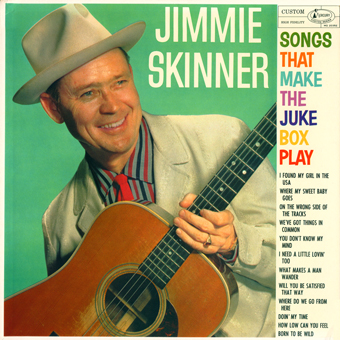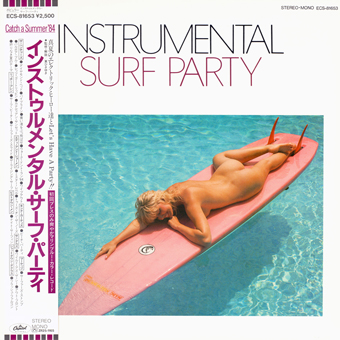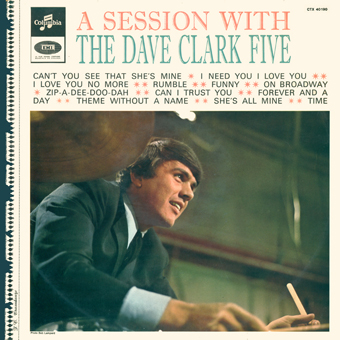Now, 45's rule, OK ? Even audiophile LPs are now often split into four album sides pressed at 45 rpm, and boy, do they sound good ! That said, originals or reissues, 10" or 12", LPs can't be overlooked and every record collector has a number of them in their vaults. The format started before the '45 in reality but only began to become popular in the late Fifties. Pop, jazz and soundtracks largely dominated the market but gradually, more and more country'n'western, R&B and rock'n'roll albums were released.
Those albums from the 50's and 60's generally didn't lack dynamics, in sharp contrast with so many issues - and reissues - from the 70's and beyond. Like with the singles, vinyl was mostly used in pressing plants but cheaper styrene was also much utilized, starting in the 50's (most black label Deccas are styrene for example). Colored wax, now common practice, is another fascinating part of the album collecting hobby.
But evidently, albums have the upper hand over singles on two levels : they can easily carry up to 10 tracks (or more) per side, and then there are the large-sized covers. Who hasn't ever bought an LP after just being struck by one of those many classic covers like the three which appear above ? The original US albums, with their thick cardboard jackets, are wonderful but collectors are also attracted by the Japanese LPs complete with obi and inserts, the British ones with their front laminated flipback sleeves or the French issues rightly famous for their high quality design.
Another important bit of collecting Long Player albums lies in the presence of the original inner sleeves housing the record inside the cover - especially those coming with ads for the label's back catalog for instance.
The most terrible thing to happen to LPs was the criminal invention of 'fake stereo', advertised as 'simulated stereo', 'duophonic stereo' or 'compatible stereo' as the case may be. Mono is perfect and true stereo is superb, but trying to convert mono into stereo is beyond stupidity. It ruined quite a lot of US - but also Japanese - pressings from the 60's, and it carried on well into the 70's and 80's, especially for reissues of older stuff.
With the advent of audiophile labels and their constant quest for better sound, things improved greatly but the arrival of digital brought along other problems, notably the fact of using digitally copied tapes instead of the original analog masters for remastering. True, it can be heard although no one had guessed - until 2022 - that even Mobile Fidelity, one of the giants in the audiophile world, had added a digital step in their mastering chain for vinyl. Which means that, if properly done, that shouldn't be such a problem although, I, like so many others, prefer to know that an all analog pressing is just that - all analog !
Like for the 45's section, all important info for serious collectors will appear in my comments for each LP which will be reviewed. All listings are arranged by artist or group name. Various artists compilations will appear under the letter X, arranged by labels.
Click the letters in the columns on the left and right sides and have fun !!
© Paul Vidal * Privas, France * 2024





























